- Sorry, this product is unavailable.
-
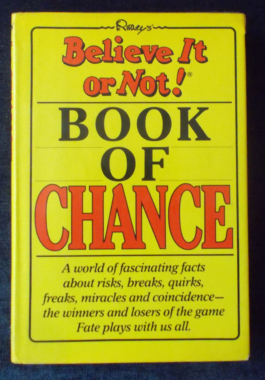 Before the Darwin Awards, there was Ripley's world of fascinating facts about risks, breaks, quirks, freaks and miracles. Such as... Minnie Gawell, who, in drawing a raffle, picked her own numbers four times in succession; if Bram Stoker had not eaten crab for his dinner (which gave him awful nightmares) the world would never have had Frankenstein; and the refugees from floods in Pakistan who received a supply of brassieres. Over 300 pages of the very weird but very true. With illustrations and photographs.
Before the Darwin Awards, there was Ripley's world of fascinating facts about risks, breaks, quirks, freaks and miracles. Such as... Minnie Gawell, who, in drawing a raffle, picked her own numbers four times in succession; if Bram Stoker had not eaten crab for his dinner (which gave him awful nightmares) the world would never have had Frankenstein; and the refugees from floods in Pakistan who received a supply of brassieres. Over 300 pages of the very weird but very true. With illustrations and photographs. -
 Set in the immediate post Civil War period, two boys, mustered out of the U.S. Military in 1865, construct a singular craft and make a perilous voyage down the mighty Missouri River from Fort Benton to St. Louis.
Set in the immediate post Civil War period, two boys, mustered out of the U.S. Military in 1865, construct a singular craft and make a perilous voyage down the mighty Missouri River from Fort Benton to St. Louis. -
 There would appear to be two editions of this book; the other is published as The Havesome Book of Nutty Records. The Daffodil edition seems to be much rarer and is probably a joke reference to Daffodil brand Peanuts and Peanut Butter. Contains such fun as phone box and lavatory cramming, wheelbarrow races, underwater records, coin balancing, competitive shovelling, non-stop jiving, distance for pushing a peanut with the nose and a great many more 'nutty' record-breaking attempts.
There would appear to be two editions of this book; the other is published as The Havesome Book of Nutty Records. The Daffodil edition seems to be much rarer and is probably a joke reference to Daffodil brand Peanuts and Peanut Butter. Contains such fun as phone box and lavatory cramming, wheelbarrow races, underwater records, coin balancing, competitive shovelling, non-stop jiving, distance for pushing a peanut with the nose and a great many more 'nutty' record-breaking attempts. -

A family is curious about a legend surrounding a string of beads, handed down from Great-grandfather. Kept in a horn snuff-box with a clue - or a riddle -
Our mystical meaning a secret shall be: Here's a key for a lock, find a key for the key.
They must be kept in the house as long as the house remains in the family - and this was stated clearly in Great Grandfather's will. It was believed, once, that the string of beads - being a variety of colours - might be a form of cipher or code that contained a hidden message. But none yet have cracked the code... -
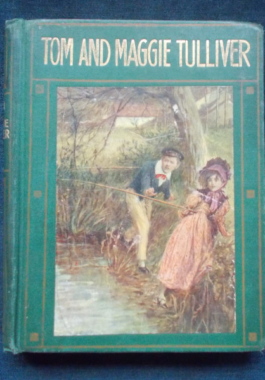 A story of sibling devotion told from The Mill On The Floss. This excerpt of Tom and Maggie's early years was first published as a stand-alone in 1909. Little Maggie worships Tom and wants his approval - but Tom is unpredictable; sometimes he acts as if he loves Maggie and other times he is very unpleasant to her. Tom is sent to school to get a proper education and Maggie misses him greatly. But when his school days are done, Tom may have learnt to love his studies; he has made a very good friend; and Maggie is becoming a young lady.
A story of sibling devotion told from The Mill On The Floss. This excerpt of Tom and Maggie's early years was first published as a stand-alone in 1909. Little Maggie worships Tom and wants his approval - but Tom is unpredictable; sometimes he acts as if he loves Maggie and other times he is very unpleasant to her. Tom is sent to school to get a proper education and Maggie misses him greatly. But when his school days are done, Tom may have learnt to love his studies; he has made a very good friend; and Maggie is becoming a young lady. -
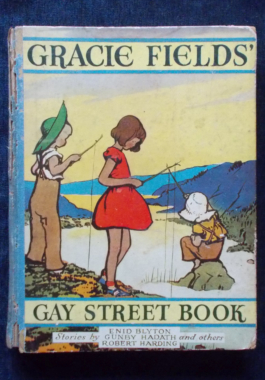 Gracie Fields was well known as a music hall star, singer/comedienne and actress of the 1930s and was voted most popular box office actress in 1937. She was particularly famous for her comedic songs. In this compendium of childrens' stories from the 1950s: Viking Proves Himself, Geoffrey Proust; Good Dog, Tinker! Enid Blyton; Nature Ramble - Spring By Pond And River, Hedgerow Joe; The Saint Piran's Gold, Captain Lawson Smith; The Black Tarn Mystery, Errol Collins; A First-Class Brownie, D.E. Booth; Nature Ramble - Summer To The Sea, Hedgerow Joe; Dreams Go By Contraries, Gunby Hadath; A Piece Of Rope, Edyth Harper; Police Message! T. Holloway; The House Of Candlelight, Robin Rover; Our Dogs, Robert Harding; Nature Ramble - Autumn And Winter, Hedgerow Joe; A Headmaster's Ethics and Channel Conquerors, Robert Harding; In Search Of A Book, Selwyn Gummer. With an introduction by Gracie Fields.
Gracie Fields was well known as a music hall star, singer/comedienne and actress of the 1930s and was voted most popular box office actress in 1937. She was particularly famous for her comedic songs. In this compendium of childrens' stories from the 1950s: Viking Proves Himself, Geoffrey Proust; Good Dog, Tinker! Enid Blyton; Nature Ramble - Spring By Pond And River, Hedgerow Joe; The Saint Piran's Gold, Captain Lawson Smith; The Black Tarn Mystery, Errol Collins; A First-Class Brownie, D.E. Booth; Nature Ramble - Summer To The Sea, Hedgerow Joe; Dreams Go By Contraries, Gunby Hadath; A Piece Of Rope, Edyth Harper; Police Message! T. Holloway; The House Of Candlelight, Robin Rover; Our Dogs, Robert Harding; Nature Ramble - Autumn And Winter, Hedgerow Joe; A Headmaster's Ethics and Channel Conquerors, Robert Harding; In Search Of A Book, Selwyn Gummer. With an introduction by Gracie Fields. -
 First publication for 1954. Stories in this volume: The House Down The Lane, Joan Pepper (Joan Alexander); Conscience, Burgess Drake (author of Chinese White and Hush-A-Bye Baby) The Case Of The China Dogs, Guthram Walsh; Susan And The Elder, Jeffrey Jones; Murder In High Places, Alister Kershaw (Murder In France; Village to Village; Hey Days); Suffer A Witch, Peter Shaffer (Sir Peter Shaffer, Equus); The Water Beast, E.G. Ashton; Escape to Fear, Claire Pollexfen (Plunderer's Harvest, Call of the Horizon) Cardillo's Shadow, Sydney J. Bounds https://en.wikipedia.org/wiki/Sydney James Bounds ; The Artist, Jonathan Scribe; The Cave, F. McDermott; The Green Tiger, Rett Sinclair; The Tancarrow Treasure, George Milner (real name 3rd Baron Hardinge of Penshurst). There is also a section of reviews on new detective/crime fiction, including one for Raymond Chandler's The Long Goodbye.
First publication for 1954. Stories in this volume: The House Down The Lane, Joan Pepper (Joan Alexander); Conscience, Burgess Drake (author of Chinese White and Hush-A-Bye Baby) The Case Of The China Dogs, Guthram Walsh; Susan And The Elder, Jeffrey Jones; Murder In High Places, Alister Kershaw (Murder In France; Village to Village; Hey Days); Suffer A Witch, Peter Shaffer (Sir Peter Shaffer, Equus); The Water Beast, E.G. Ashton; Escape to Fear, Claire Pollexfen (Plunderer's Harvest, Call of the Horizon) Cardillo's Shadow, Sydney J. Bounds https://en.wikipedia.org/wiki/Sydney James Bounds ; The Artist, Jonathan Scribe; The Cave, F. McDermott; The Green Tiger, Rett Sinclair; The Tancarrow Treasure, George Milner (real name 3rd Baron Hardinge of Penshurst). There is also a section of reviews on new detective/crime fiction, including one for Raymond Chandler's The Long Goodbye. -
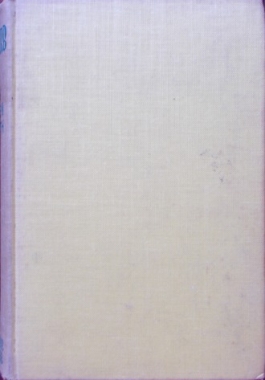
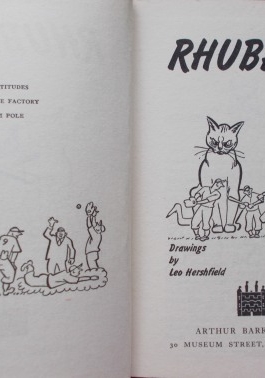
Rhubarb: H. Allen Smith
$15.00Rhubarb is a big cat who can lick the hell out of any dog that ever lived. His owner, eccentric dog-hating millionaire Thad Banner loves Rhubarb more than his 'hep-cat' daughter and in his will, he leaves Rhubarb his fortune and his big-league Baseball club, the New York Loons. And THAT'S where the trouble really begins! With fabulously funny illustrations by Leo Hershfield. -
 Written in 1913, this hefty novel commences: "I was an unwanted child - unwanted as a girl at all events. Father Dan Donovan, our parish priest, has told me all about it. I was born in October. It had been raining heavily all day long. The rain was beating hard against the front of our house and running in rivers down the window panes. Towards four in the afternoon the wind rose and then the yellow leaves of the chestnuts in the long drive rustled noisily, and the sea, which is a mile away, moaned like a dog in pain." Mary O'Neill, unwanted by her wealthy father for not being a boy, is married off to an impoverished - yet titled - man. Mary is determined to try and love her husband - she may yet please her father - but then she meets a real gentleman, in every sense of the word, and is torn between her true feelings, duty and her marriage vows.
Written in 1913, this hefty novel commences: "I was an unwanted child - unwanted as a girl at all events. Father Dan Donovan, our parish priest, has told me all about it. I was born in October. It had been raining heavily all day long. The rain was beating hard against the front of our house and running in rivers down the window panes. Towards four in the afternoon the wind rose and then the yellow leaves of the chestnuts in the long drive rustled noisily, and the sea, which is a mile away, moaned like a dog in pain." Mary O'Neill, unwanted by her wealthy father for not being a boy, is married off to an impoverished - yet titled - man. Mary is determined to try and love her husband - she may yet please her father - but then she meets a real gentleman, in every sense of the word, and is torn between her true feelings, duty and her marriage vows. -
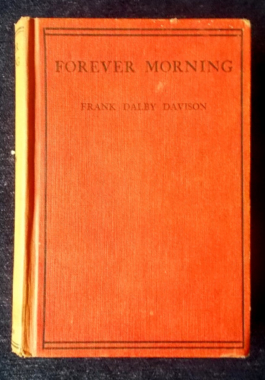 The principal characters in the story are Doris Brunton and Andy with other characters existing mainly for contrast. There is no sickly sentimentalism, the love and romance being concerned with the hero's battle against harsh reality. Set in the sheep country of New South Wales and Queensland with distinctive characterisations and the eternal atmosphere of the Australian bush.
The principal characters in the story are Doris Brunton and Andy with other characters existing mainly for contrast. There is no sickly sentimentalism, the love and romance being concerned with the hero's battle against harsh reality. Set in the sheep country of New South Wales and Queensland with distinctive characterisations and the eternal atmosphere of the Australian bush. -
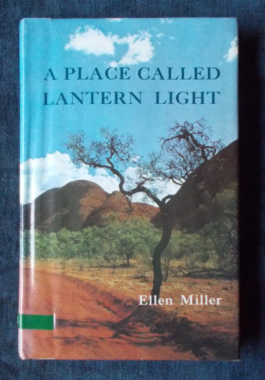 There was just the three of them now that Father had died: Mother, Jane and Jeremy. They had left their Tasmanian home to drive across the Nullabor to Lantern Light, the remote homestead of Uncle Bill, Jane's only relative. For Jane was adopted and although she had been very happy with her foster family, the prospect of meeting her relative made every dusty mile worth it. But Uncle Bill in the flesh - and Lantern Light were both very different to Jane's dreams of a family and home. This is not a only a children's or young adults story; the reader also gets the perspective of events from the adults - Uncle Bill, his friend Andrew, Mother and Eve Burton, the schoolteacher at Lantern Light. A story for anyone.
There was just the three of them now that Father had died: Mother, Jane and Jeremy. They had left their Tasmanian home to drive across the Nullabor to Lantern Light, the remote homestead of Uncle Bill, Jane's only relative. For Jane was adopted and although she had been very happy with her foster family, the prospect of meeting her relative made every dusty mile worth it. But Uncle Bill in the flesh - and Lantern Light were both very different to Jane's dreams of a family and home. This is not a only a children's or young adults story; the reader also gets the perspective of events from the adults - Uncle Bill, his friend Andrew, Mother and Eve Burton, the schoolteacher at Lantern Light. A story for anyone. -
 Cooper, Australia's first acknowledged playwright, lived a full life: Actor, journalist, politician, a bankrupt who once fought a duel in Sydney with his brother in law. He wrote popular farces, comedies and sensation dramas and was the first Australian playwright to have his work produced overseas. Colonial Experience is one of only two plays which survive. Contains a wealth of information about Cooper and the entire play text.
Cooper, Australia's first acknowledged playwright, lived a full life: Actor, journalist, politician, a bankrupt who once fought a duel in Sydney with his brother in law. He wrote popular farces, comedies and sensation dramas and was the first Australian playwright to have his work produced overseas. Colonial Experience is one of only two plays which survive. Contains a wealth of information about Cooper and the entire play text. -
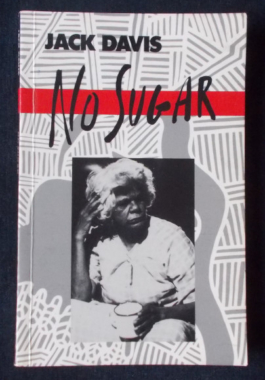
No Sugar: Jack Davis
$20.00A spirited and internationally acclaimed play set in the 1930s during the Great Depression. It tells the story of an Aboriginal family, the Millimurras. who removed from their home and forced to work on the Moore River Native Settlement. The Millimurra family take a stand against the Government's 'protection' of 1930s Australia - the Chief Protector, A.O. Neville believed at that time that 'the native must be helped in spite of himself.' Published in 1986, academics consider it an effort to validate the importance of Aboriginal culture, while also communicating the feelings of isolation when people cannot understand their own language and cultural customs. It received the Australian Writers Guild Award (AWGIE) for best stage play. -
 An essential guide to Australian rhyming slang drawn from oral sources in and around Sydney. Three of the author's best informants were mates who'd spent some time as guests of Her Majesty in Sydney's Long Bay Jail. Two other prolific sources were a couple of retired shearers. Great as a social document or just for fun - or even as a gift to a 'New Australian' so they know the meaning of such phrases as He did a Harold Holt (bolted, vanished); Here comes the John Hops/Johns (cops, the police); I'm on me Pat Malone; I'm alone; The saucepan lids are home on holidays - The kids are home on holidays plus many more.
An essential guide to Australian rhyming slang drawn from oral sources in and around Sydney. Three of the author's best informants were mates who'd spent some time as guests of Her Majesty in Sydney's Long Bay Jail. Two other prolific sources were a couple of retired shearers. Great as a social document or just for fun - or even as a gift to a 'New Australian' so they know the meaning of such phrases as He did a Harold Holt (bolted, vanished); Here comes the John Hops/Johns (cops, the police); I'm on me Pat Malone; I'm alone; The saucepan lids are home on holidays - The kids are home on holidays plus many more. -
 Published in 1973, this book has now become an interesting social and historical document. All things Australian are covered: our economic stability and strength; the vastness and sunshine of the land; our urban and industrialised life and our unique flora and fauna geography. Also covered are our political parties; our slang and currency; our living standards; private and public businesses; education; transport; arts, sports and amusements - all of which have developed with our unusual historical background.
Published in 1973, this book has now become an interesting social and historical document. All things Australian are covered: our economic stability and strength; the vastness and sunshine of the land; our urban and industrialised life and our unique flora and fauna geography. Also covered are our political parties; our slang and currency; our living standards; private and public businesses; education; transport; arts, sports and amusements - all of which have developed with our unusual historical background. -
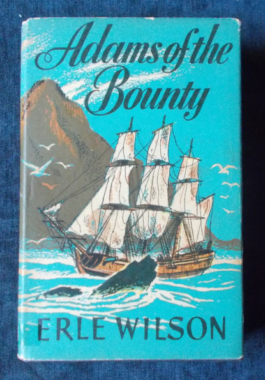 A novel based on historical fact, it tells the complete story of the part played in the Bounty mutiny by the man known as Alexander Smith - real name John Adams - his subsequent fate and that of the eight other mutineers together with their Maori women and friends who finally sailed from Tahiti in the Bounty in search of a secret sanctuary. The book offers adventure and excitement as well as the idea that the popular legend of Fletcher Christian as a hero and liberator and Bligh being branded as a bullying, inhuman monster may not be accurate; far from being an apologia for Bligh, it presents a logical, commonsense view of events that have intrigued historians since Bligh's first dispatches from Timor reached London. Cover art by Frank Norton.
A novel based on historical fact, it tells the complete story of the part played in the Bounty mutiny by the man known as Alexander Smith - real name John Adams - his subsequent fate and that of the eight other mutineers together with their Maori women and friends who finally sailed from Tahiti in the Bounty in search of a secret sanctuary. The book offers adventure and excitement as well as the idea that the popular legend of Fletcher Christian as a hero and liberator and Bligh being branded as a bullying, inhuman monster may not be accurate; far from being an apologia for Bligh, it presents a logical, commonsense view of events that have intrigued historians since Bligh's first dispatches from Timor reached London. Cover art by Frank Norton. -

 Hudson explores the forces responsible for bringing about the Renaissance, which he describes as...the West's transition from the medieval to the modern world. Voyages of discovery, inventions, the revival of classical learning and the advent of science contribute to the intellectual upheavals of this creative period which are reflected in its literature and art. Hudson focuses on the one thread of continuity which he sees as both the seed and the fruit of this exciting era: the awakening of secular humanism and the emergence of the individual. Chapters: The Renaissance In General; The Age Of Invention And Discovery; The Revival Of Learning; The Renaissance In Religion: The Reformation; Science And Philosophy; Art, Literature And Education. Illustrated.
Hudson explores the forces responsible for bringing about the Renaissance, which he describes as...the West's transition from the medieval to the modern world. Voyages of discovery, inventions, the revival of classical learning and the advent of science contribute to the intellectual upheavals of this creative period which are reflected in its literature and art. Hudson focuses on the one thread of continuity which he sees as both the seed and the fruit of this exciting era: the awakening of secular humanism and the emergence of the individual. Chapters: The Renaissance In General; The Age Of Invention And Discovery; The Revival Of Learning; The Renaissance In Religion: The Reformation; Science And Philosophy; Art, Literature And Education. Illustrated.



